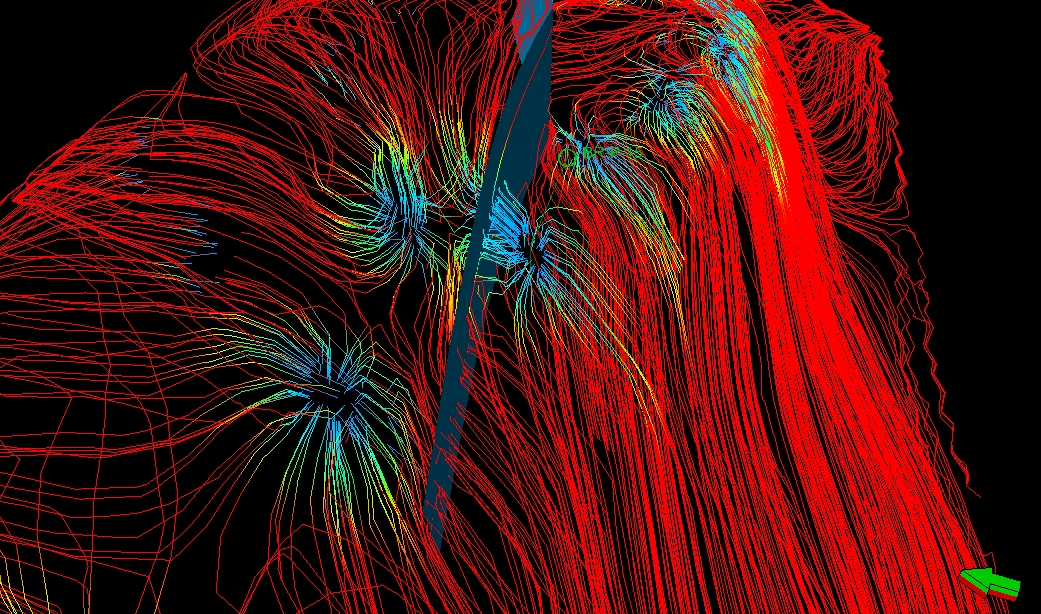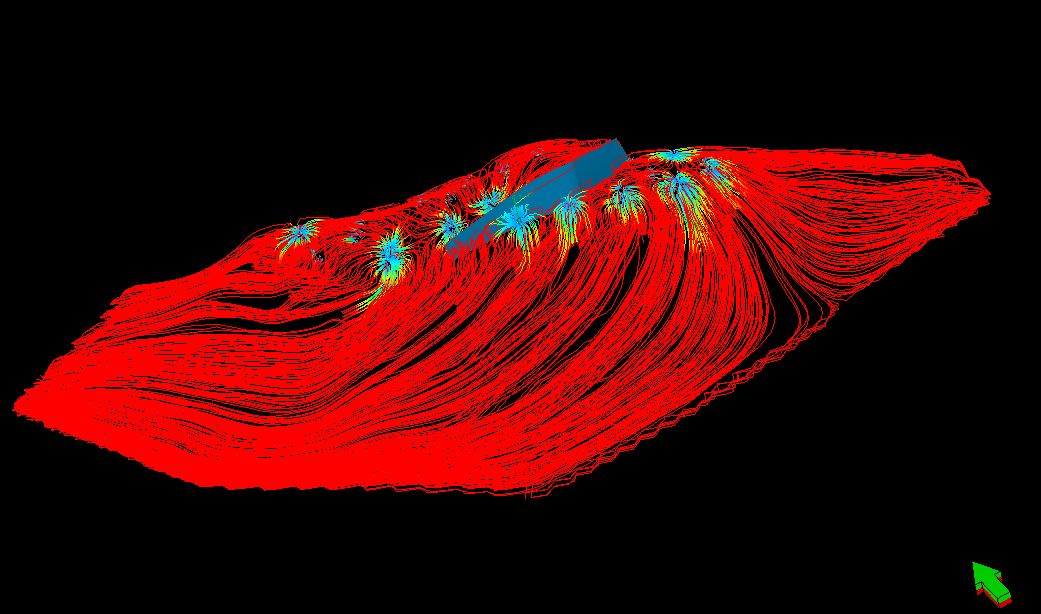17.3 Streamlines
| Topic Version | 1 | Published | 09/11/2015 | |
| For Standard | RESQML v2.0.1 | |||
In a reservoir engineering context, streamlines are a way to visualize and represent fluid flow. They are especially useful for understanding the volumetric sweep relationships between wells or within a reservoir. They have many applications and, for example, have been used as a basis for fluid flow simulation, sweep management, well rate optimization, and infill well placement (Datta-Gupta and King 2007).
In a more general sense, streamlines are geometric lines that are everywhere tangential to a vector field, and as a consequence they never cross in space (Figure 17.3-1). Also as a consequence, streamlines are static objects. If the underlying vector field changes with time, then the streamlines must be re-drawn. This is in contrast to a “streakline,” which describes the physical trajectory of a particle in a time-varying velocity field. Streamlines and streaklines are only identical for steady velocity fields.

In RESQML, the streamlines data object is used to describe collections of streamlines (Figure 17.3-2).


The streamlines feature describes the nature of the vector field, while the streamlines representation describes the geometry and topology of the lines. All streamlines representations must have both an interpretation and a streamlines feature. As with all other representations in RESQML, properties may be attached to these representations. For example, in Figure 17.3-2 , the streamlines property visualized is the “time of flight to the producer,” which indicates how quickly fluids drain from the reservoir. Although the streamlines appear to cross in the two dimensional field of view, they do not cross in three dimensions.